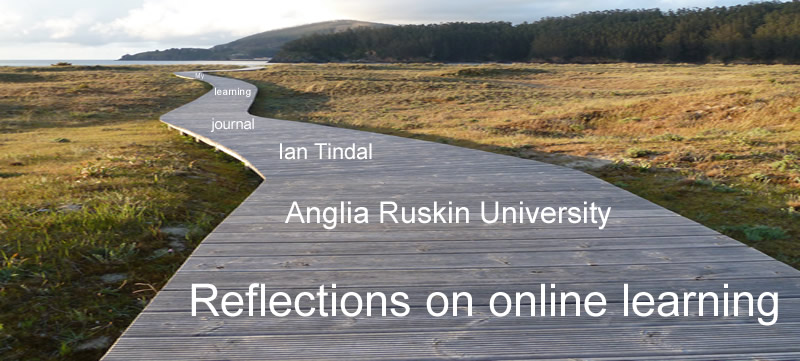Twitter shower discussing 3Es Framework.
From this initial introduction it seemed to me that there is an assumption that students will at first have relatively low levels skills and that learning design should help them progress across the continuum towards developing an deploying higher level skills.
It sounded a bit prescriptive at first I was left thinking what if students in a group are not all at the same level of tech or learning competence? What about mixed group work where students scaffold each other? As the Twitter shower progressed I warmed to it a bit. It certainly looks like it could be a useful set of prompts for individuals or small differentiated groups.
In the Twitter shower/storm/deluge there seemed to be a fair consensus towards the value of early empowerment and ownership amongst students. I need to read the storify to check that it is all a bit swirling round at the moment. mostly due to me experimenting with Tweetdeck, TweetChat and Hootsuite during the hour, rather aptly I was seeing in the Tweets that others were doing the same and we were also touching on the value of iterative experimenting / play with no fear of failure / seeing experimenting and failure as a potentially valuable learning process and the need to be clear to students that they are allowed to fail so they can learn from that experience.
I spent a fair bit of time thinking about the structure of my own practice.
Gaining credit by learning from things that do not go well is built into the Ultraversity model for learning design. That partly reduces the risk of failing a module but that is not to get weak students and easy ride to an award it is to encourage experimentation - sometimes radical experiments lead to useful innovative solutions and I don't want to hold anyone back from trying new things. There is no point in setting out on a journey that is bound to fail, many errors can be avoided by good planning. There is ownership of the learning from day 1. Students develop an ILP or research plan in the first few weeks of a module that shows how they will adapt the module to fit with their own workplace context and personal needs. There is a tutor review and negotiating of approaches process built in, this is supported by peer - peer review as well so that generally ensures that the student's proposed approach will enable them to meet the learning outcomes and that any errors in interpreting goals or designing activities are identified and rectified before they become problematic.
We adapted Richard Winter's Patchwork Text' approach to encompass assessment of a wide range of electronic media and so call our version the Patchwork Text and Media approach. At the module level activities are broken down into discrete but related patches, these are then stitched together via a retrospective critical commentary. In this the students self evaluate what they have learned about learning on both the personal and organisational level. This is because these are work focused students integrating study into their work activities with the aim of improving personal practice and contributing to organisational learning as well.
The degree is process driven with themes relating to the title: 'Learning, Technology and Research'.
A module might have a structure as below:
Patch 1. Literature review. Learning about theory and developing a critical voice while doing so. some of the key theory areas we cover include reflective practice, action inquiry, prototyping and testing, professional development, research design, presentation of information. These are then interpreted as learning processes students can apply.
Patch 2. Design how to apply the theory to improve practice in the workplace. This is a problem identification and solution design phase, the problem may be how to improve something that has gone wrong, something that is weak or something that is already good but could be better. Ideally some of the modules will focus on addressing professional development or appraisal targets the student has.
Patch 3. Implementation of theory to solve a problem. This is the active research phase, processes from theory are used to implement change, data is collected and evaluated, iterations of improvement cycles progress, findings are articulated.
Patch 4. Project evaluation. Having applied theory to practice the literature is re-evaluated in the light of experience - was it interpreted correctly in the lit review; did it stand up to scrutiny when applied in the real world? What was learned about practice through this approach to problem solving / implementing improvement strategies? How could the findings contribute to improving practice in the wider organisation?
Stitching. Retrospective evaluative commentary. In this activity each patch is reflected on from a learning perspective; identifying what went well, what could have been improved and what the improvements might be. If there were weaknesses in the interpretation of literature for example the student might devise a better way of approaching searching for literature and developing a systematic review process. Less visible aspects are examined such as their participation in peer review, their use of technologies or of the library and other services. Recommendations for how they will enhance their learning strategies ready for the next semester are devised.
Students are encouraged to consider; who was I - what did I learn - who am I becoming - what do I need to do to become the person I aspire to be?







